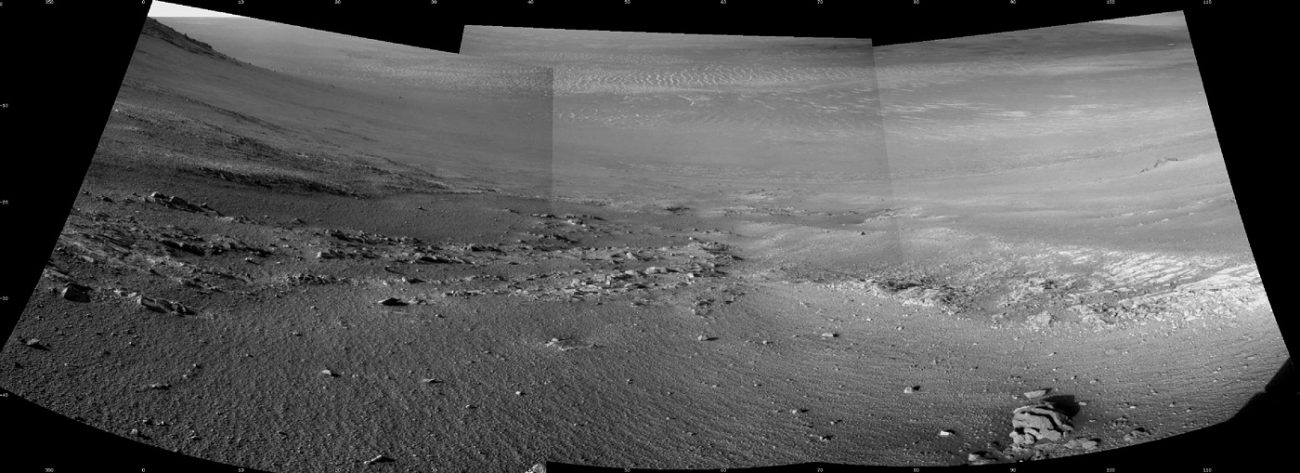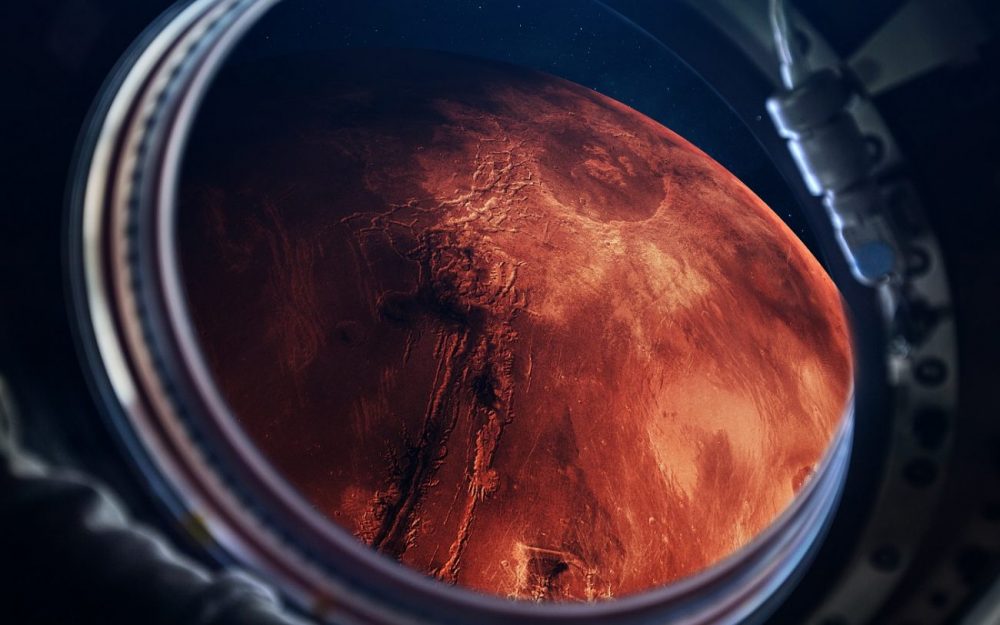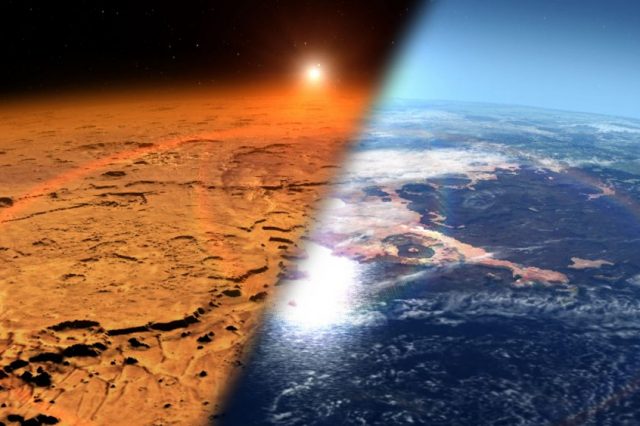Mars is a fascinating planet and the most similar to Earth in our Solar System. But what makes such an incredible world? Find out below.
Humankind is on the verge of exploring the entire solar system, paving the way for colonization. Mars was the first planet Earth attempted to explore in our journey to expand to the stars. These early exploration attempts taught us numerous lessons that have made subsequent missions to Mars and other places in the solar system more successful.
And if we do actually colonize other moons and planets in the solar system, Mars is likely to be among the first.
But before colonizing it, we must know everything about Mars. This is what we have been doing for the past few decades, thanks to the numerous missions that have traveled to Mars and explored the surface of the red planet in an unprecedented way.
Mars Exploration Current Missions (NASA)
There are quite a few active missions on Mars.
As explained by NASA, Mars is being explored by InSight, Mars Atmosphere, Volatile EvolutioN (MAVEN), Mars Reconnaissance Orbiter, and Mars Science Laboratory (Curiosity), Mars Express, and Mars Odyssey.
Future missions Mars Missions are ExoMars Rover and Mars 2020.

What we Found on Mars
After decades of exploring, and thanks to numerous missions on Mars that have been retired, we learned a plethora of information about the red planet.
NASA’s Opportunity and Spirit rovers made quite a few unprecedented discoveries on Mars.
1) Martian ‘Blueberries’
After making a successful landing on Mars, in February of 2004, Opportunity’s microscopic images, placed on top of its robotic arm, decided to take a closer look at the Martian soil. As it zoomed in, it made a sensational discovery on Mars.
The rover had discovered ‘weird blueberries’ on Mars, composed of hematite.
The mysterious blueberries are thought to have been formed in the ground by water. This discovery was one of the first findings that drastically changed our view of the red planet.
2) First Meteorite on an Alien planet
A lot of meteorites impact Earth every once in a while. Unfortunately, many of them go unnoticed.
The same can be said about Mars. It’s just that when we discovered the first meteorite on the red planet, it was a big deal, as it was the first time we had seen a meteorite on an alien world.
The Opportunity rover spotted the meteorite, and it was sitting right next to its heat shield.
The rover went on to find that the alien rock that had landed on Mars was made mostly of nickel and iron, a type of meteorite that is not commonly found on Earth. This suggests that these types of meteorites are common on Mars for some reason.

3) Water on Mars
We usually see Mars as a desolate, arid planet, void of water, atmosphere, and life.
But all of that changed, and thanks to Opportunity, we began to understand what Mars was really like. As the rover ventured out into a deep crater named Endurance and the Victoria Crater, it found conclusive evidence of abundant water on Mars.
At Endurance, the rover discovered that Mars went through periods of dry and wet climate. Opportunity found that the Victoria Crater was dotted by hematite. The water at Endurance and Victoria crater was most likely salty and acidic.
4) Non-Acidic Water
But Oppy’ also found evidence of non-acidic water that may have given rise to early life on Mars. In fact, at the edge of the Endeavor Crater, Opportunity discovered traces of a LOT of water.
The rover had discovered that Endeavor’s rims contained abundant clay that only form in natural water. This type of water is common on Earth but different on Mars.
This discovery was the first sign suggesting that life may have developed in the distant past on Mars. In November 2018, the Curiosity rover confirmed plenty of water on Early Mars based on geological evidence and studies on the Gale Crater.
5) A rock called Esperance
After Nine years of exploring the surface of Mars, Opportunity traveled to an area on Mars called Solander Point. There, the rover photographed a strange fractured rock that experts dubbed Esperance. And Esperance was important. Why? Because it could tell experts a lot about Mars’ watery past.
There was a lot of water on ancient Mars, and this fractured rock was like a time capsule. Scientists said that even though Oppy explored Mars for nearly nine years at the time, they had never seen a rock like Esperance, composed of aluminum, silica, calcium, and iron.
Esperance was a rock that showed intense alterations and fractures that provided conduits for fluid flow and revealed experts.
The Martian water that moved through these fractures may also have provided more favorable conditions for biology than any other wet environment that Oppy had explored until then.

6) Enigmatic Stripes
As Oppy made its way across Mars, exploring the Endeavor crater again, it found a curious thing on the Martian surface. There, on the western rim of the Endeavor Crater, the rover photographed something that caught the attention of experts on Earth.
They named the region Persenvace Valley, and experts immediately knew it was a special place on Mars. It was unlike any other area the rover had seen before.
Oppy’ photographed a series of mysterious stripes at Perseverance Valley, and experts could not fully explain them. We still don’t know what causes the stripes.
One theory suggests the stripes are evidence of when snow packs on the crater’s rim melted enough, moistening the Martian soil until they would freeze again, eventually producing the stripes.
7) Mystery at Matijevic Hill
Mars is packed with mystery. And the red planet is stranger than we’ve ever imagined.
When Oppy explored the Matijevic Hill, it traveled to a small rock outcropping dubbed Kirkwood by experts. There, the rover found many smaller, spherical objects that resembled the ‘blueberries’ the rover had previously discovered.
But the spherules were not blueberries. These mystery objects laked the high iron content that blueberries had. It was another mystery on Mars.
The odd objects seem crunchy on the outside but soft in the middle. They differ in concentration compared to the Martian blueberries and have different structures and compositions.

8) Mars, like Earth, has dust devils
Oppy made a lot of discoveries. Some of them are mysterious. Some of them are cool. As it explored the Martian surface, its cameras observed and recorded a Martian dust devil. Traveling uncontrollably across the Martian surface, the dust devils on Mars are tiny isolated columns of swirling air at the interfaces between different weather systems.
9) Mars, similar to Hawaii
In some ways, it was found that certain regions on Mars resembled Hawaii or better set the weathered basaltic soils of Hawaiian volcanoes.
In 2012, the Curiosity Rover performed its first X-ray diffraction analysis of Martian soil, revealing several different minerals, including feldspar, pyroxenes, and olivine, suggesting that the Martian soil in the sample resembled the weathered basaltic soils of Hawaiian volcanoes.
10) Geochemical conditions in Gale Crater
In 2013, as Curiosity was learning more about Mars, the rover was exploring the Gale Crater. There, it found clear evidence that Gale Crater’s geochemical conditions were once suitable for microbial life.
The discovery was made after Curiosity analyzed the first drilled sample of the “John Klein” rock at Yellowknife Bay inside the Gale Crater. Experiments revealed the presence of water, carbon dioxide, oxygen, sulfur dioxide, and hydrogen sulfide.
11) Martian atmosphere
In 2013, researchers revealed that Curiosity found evidence that Mars’ atmosphere was lost to space.
The discovery was made based on argon isotope ratio studies.
Scientists discovered evidence that the red planet “has lost a good deal of its atmosphere over time,” based on the abundance of isotopic compositions of gases, particularly those related to argon and carbon.
The Maven mission confirmed this.
12) A lost atmosphere
In 2015, scientists from the Maven mission announced that water was abundant on Mars for our solar system’s first 100 million years.
The red planet had vast oceans, rivers, and lakes.
But at some point in the planet’s history, perhaps less than a billion years after the red planet formed, its magnetic field broke down and removed the planet’s primary protection from the solar wind.
Fast-moving particles –mostly protons– impacted the planet at a mind-bending speed of 1,000,000 mph, eventually causing Mars to lose around 100 grams of atmosphere every second. However, Mars did not lose its atmosphere immediately. Experts argue that this process was gradual and took tens or even hundreds of millions of years.

13) Methane on Mars
There is Methane on Mars, and in 2019, Curiosity discovered how Methane’s background levels in the Martian atmosphere cycle seasonally and peak in the northern summer.
Curiosity sniffed out the gas in 203 and 2014 while driving around the Gale Crater as it explored the Martian surface.
Although some geological processes can produce Methane, most of the Methane on Earth comes from microbes and other living creatures.
14) Organic Carbon on Mars
In 2018, scientists presented a new study in the journal Science describing a discovery made by the Curiosity Rover. Scientists found evidence of large organic molecules on the Martian surface.
The rover data revealed that the water lake that once filled the Gale Crater was home to complex organic molecules some 3.5 billion years ago.
These molecules are still present, preserved in sulfur-spiked rocks derived from lake sediments.
15) Marsquake
In 2019, NASA’s InSight mission detected the very first Marsquake. Likewise, a French-made seismometer, the SEIS, registered the very first quake on Mars.
As noted by experts, the Martian quake’s sound resembles seismic signals that NASA registered on the moon’s surface during the Apollo Missions. The Martian earthquake was recorded on April 6, 2019, during the lander’s 128th Martian day, or sol.
Join the discussion and participate in awesome giveaways in our mobile Telegram group. Join Curiosmos on Telegram Today. t.me/Curiosmos





